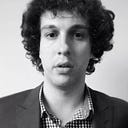Member-only story
Beep Beep: The History of George Laurer and the Barcode
How a 67-cent pack of Juicy Fruit, and a guy who said no, changed the way we shopped

Author’s note: This story was initially reported in 2014 but was not published. It’s released here today in memory of George Laurer, who died on December 10, 2019 at the age of 94.
 Forty-five years ago Clyde Dawson handed over a 10-pack of Wrigley’s Juicy Fruit chewing gum to checkout clerk Sharon Buchanan in the Marsh Supermarket in Troy, Ohio. It was 8 a.m. and Dawson wasn’t any ordinary shopper — he was Marsh’s director of research and development — and this wasn’t any ordinary transaction.
Forty-five years ago Clyde Dawson handed over a 10-pack of Wrigley’s Juicy Fruit chewing gum to checkout clerk Sharon Buchanan in the Marsh Supermarket in Troy, Ohio. It was 8 a.m. and Dawson wasn’t any ordinary shopper — he was Marsh’s director of research and development — and this wasn’t any ordinary transaction.
History was made, and it cost 67 cents.
This was the first time the Universal Product Code (UPC) barcode — the small black-and-white label we see on all the items we buy from stores — had been used in a commercial environment. Clyde Dawson was asked a year later whether he felt the implementation of barcode scanning in his stores was beneficial.
“Decidedly yes,” he said. “For a 14-item order, the manual system handles 45 customers per hour; the scanning system 51 — a 13% improvement in throughput.” It might not have been the most impassioned answer, but Dawson was prescient. Four decades on, barcodes dominate our lives. A 67-cent packet of gum has ballooned into an enormous industry, and five billion barcodes are scanned each and every day.
“One application of the invention,” they wrote, “is in the so-called supermarket field.”
But how did we get to this point, and who was responsible for the UPC barcode?
Were it not for a radio and TV repair instructor named Mr. Kuttlechuck, George Laurer would likely have ended up a ne’er-do-well.
“At times I wasn’t the upright teenager I should’ve been,” Laurer admits. While in his freshman year at Forest Park High School in Baltimore, Maryland, Laurer contracted polio, taking him out of the regular classroom routine for nearly two years. When he did return, World War II interrupted his education again.
After the war, Laurer joined a radio and TV school. A year later, Kuttlechuck…

